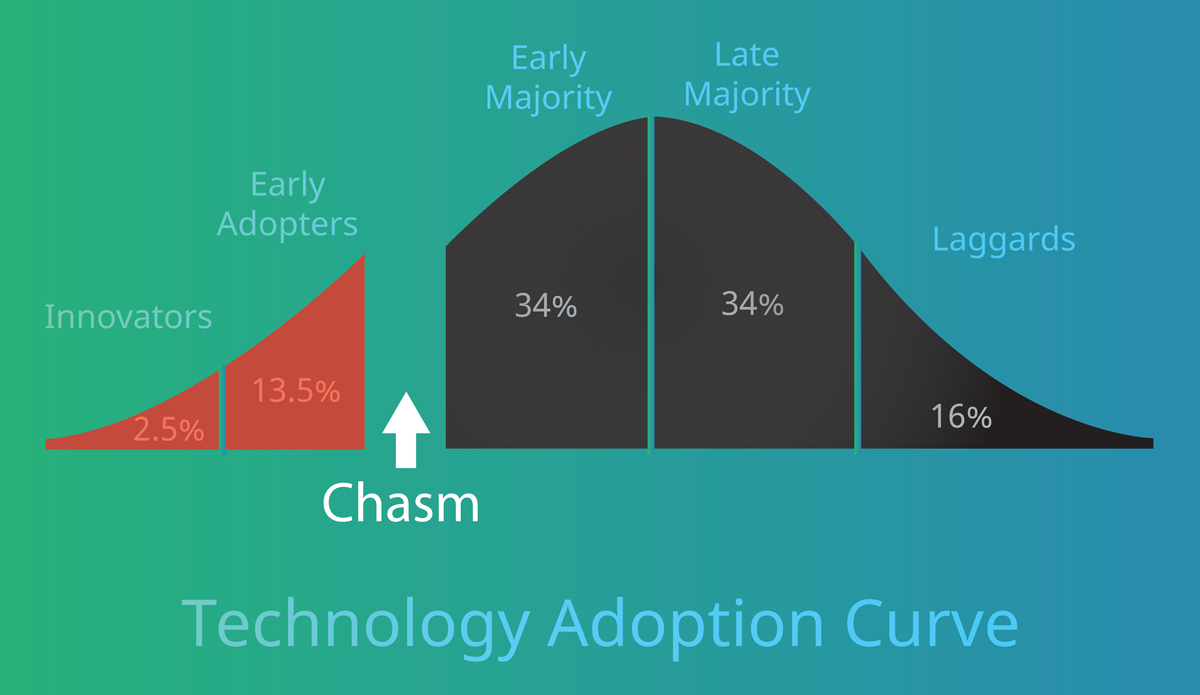here is symbiotic relationship between innovation and adoption. The work of innovation can only go so far until it must wait for adoption to catch up and create the next opportunity for innovation. I have personally experienced this circular relationship, which is especially prominent in the education field. While technical innovations in the classroom have been available for some time, it is the onset of the pandemic that has moved innovative ideas designed for the classroom into the adoptive phase.
As a teacher I want to give students the best experiences and opportunities possible. I know technology enables novel experiences unthinkable to most teachers. One of the technologies I find most fascinating and promising is video calls. I envision expanding my classroom beyond the walls of the school into an ever-shrinking world, connecting my students to experiences normally out of reach. Travel policies and costs make it impossible to take my students beyond an hour’s drive, and budgets prohibit me from bringing in experts with travel requirements. Today, both are accomplished virtually through video calls.
Ironically, the closing of schools was the catalyst for opening classrooms to the world.
The COVID-19 pandemic brought a huge disruption to every facet of life. Most notably it changed the way we connect with people. Being in the physical presence of work colleagues, friends, and even extended family no longer was an option.

While this perhaps doesn’t sound revolutionary today, at the time it was an entirely new concept. Kevin was excited at the possibility, and I was excited to test my theories and research with a real classroom and with a teacher other than myself. We loaded the software and did a couple of tests before he left. In short order we were holding band rehearsals in the music room with his larger-than-life-size image on the projector screen and his voice booming from the stereo. He gave instructions on what to play and the drum majors led the music. Throughout the course of our experiment, Kevin’s colleagues observed what we were doing and were amazed at the effectiveness and impact. I knew at that point we were on to something. We were doing what no one had even considered possible. It was fun and exciting.
With a first successful test run, I was ready to share this with others and had visions of everyone using webcams for video calls in their classroom. I signed up to present a breakout session at the Utah Music Educators Association conference. As music educators walked in, they saw a classroom of students projected onto a screen. When we began, I informed them that what they were seeing was not a video but my actual classroom, at that very moment, live. My faculty advisor was working with my students from 300 miles away. We demonstrated how effective this could be in bringing a guest to the classroom. I gave details on equipment needs and how to set the system up in their own classrooms.
I naively expected to get emails and calls from colleagues telling me about their experiences or asking set-up questions. I was disappointed when only one teacher used what I had shared. Though many thought it was amazing, they didn’t feel they had the necessary technology skills to make it happen in their classroom. I had the same challenges trying to bring guests into my classroom. Most declined because they didn’t feel they could get it to work. Their lack of exposure and experience prevented them from trying, even if I offered to help walk them through it.
An individual’s previous experiences influence their comfort level and the size of the gap. Each individual also has a personal threshold for the amount of gap they are willing to jump for adoption. These two factors determine where on the adoption curve an individual falls. Innovators enjoy the thrill of stepping into something new; laggards will resist as long as possible. Early adopters, the early majority, and the late majority are all determined by these two factors. Some people may be in the early majority for one adoption and the late majority for another.
Jonathan Fields of the Good Life Project says, “There is no such thing as disruption without possibility.” COVID-19 brought a huge disruption to communication and human connection. This allowed the possibility of video calls to take hold and become standard. Zoom became a household name and almost everyone was participating in regular video calls. The Adoption-Comfort Gap had closed for nearly all.
